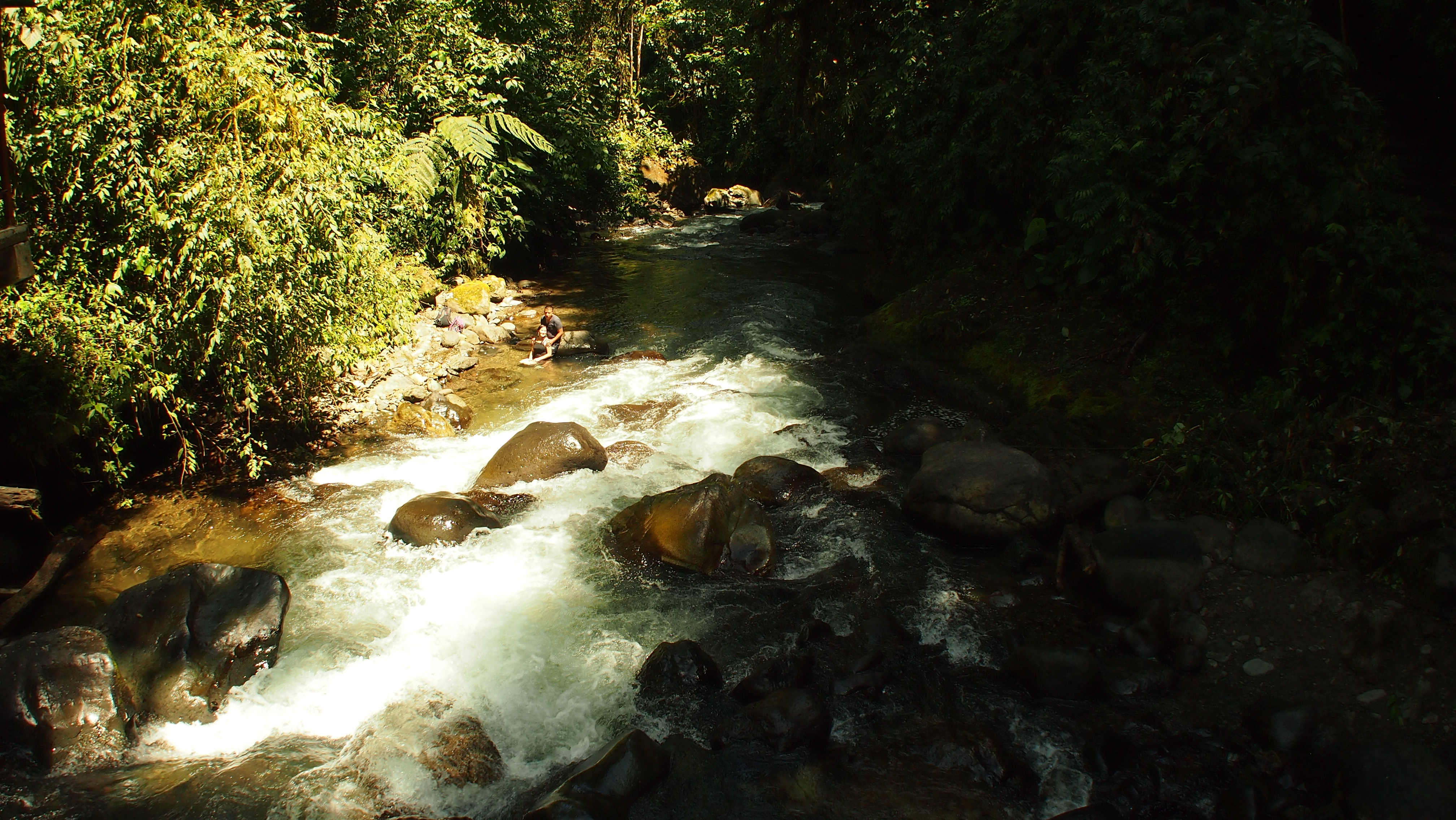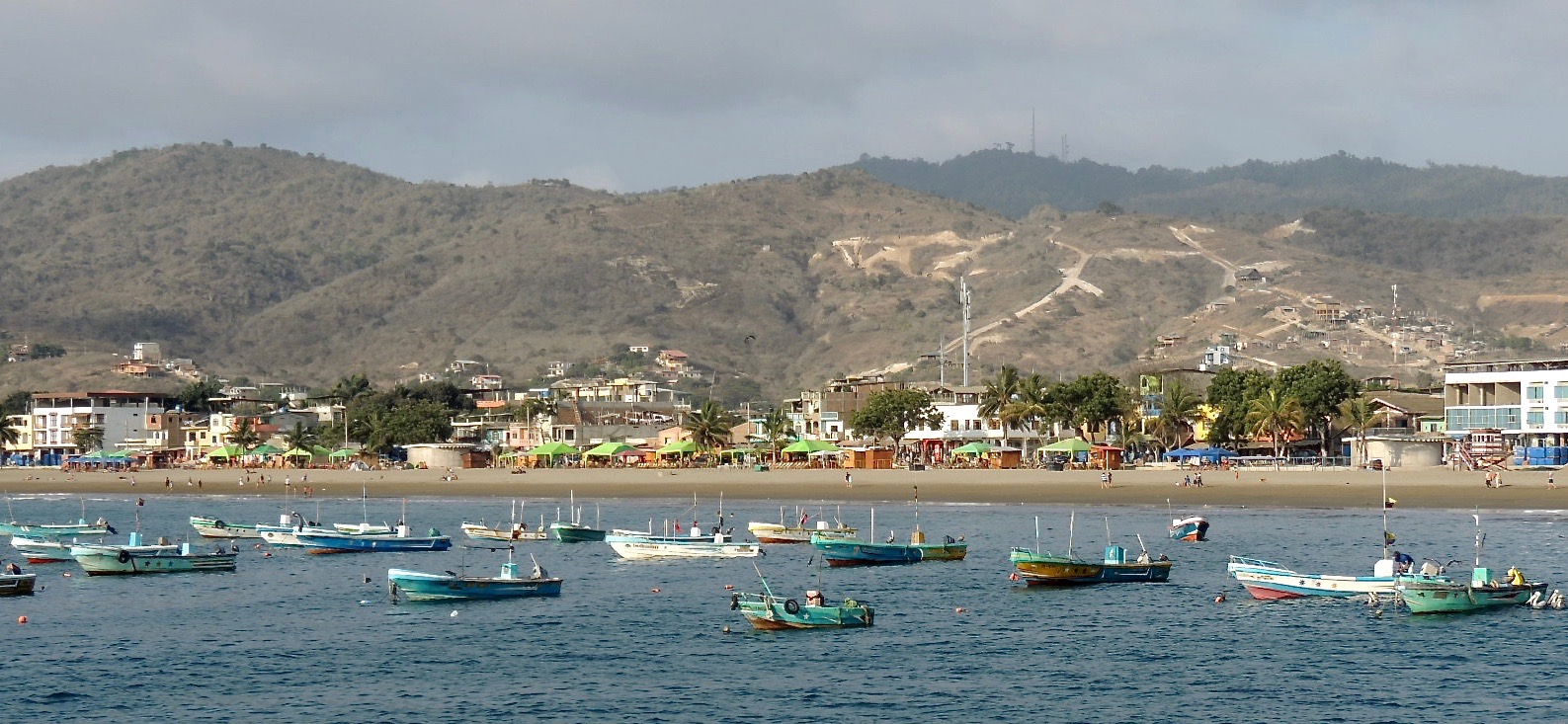
Tourists visit Puerto Lopez, Ecuador for three major reasons: Isla de la Plata, whale watching and the beach. What they miss is a lesson in fine chocolate making at Chocolates Pacha.
Angel Zurita and Veronica Alvarez, owners, begin by cultivating the cocoa bean at two orchards close to their Puerto Lopez operation. They offer a tour which includes a visit to the closer orchard. I never really thought about how chocolate becomes chocolate. My chocolate as always had “Mounds” written on the wrapper. I was getting ready to learn much more about the process:
A small group gathers at the Pacha facility. Our group of nine people piled into Angel’s van and made the short 15 minute trip to a grove of cocoa trees. The beans snuggle against the truck of the trees where they are easily harvested when mature.
Angel pulled off one of the beans and split it open revealing a cluster of white, neatly packed seeds. He offered each member of the group to take a seed and eat it. It’s not exactly eating because the white covering is a sweet membrane type substance and the seed within is hard. When you have removed as much of the white covering as possible, you spit out the seed.
Next we learned about the intensive process:
Stage One: Fermentation, Drying and Roasting
1. The seeds are put into cedar boxes to ferment. Fermentation takes about 5-8 days. The white substance becomes a liquid and oozes from the box. Fermentation breaks down the sugars in the cocoa fruit.
2. After drying the beans are roasted and the thin shells are separated from the meaty part of the bean, Then the cocoa is roasted in order to caramelize the sugars and bring out rich flavor. The cocoa kernel is one of the healthiest food you can eat.
Stage Two: Grinding
3. The kernels are ground in a stone grinder. For two-three days, two granite wheels grind the chocolate down to become a smooth consistency. Organic evaporated cane juice is added to the mixture.
Stage Three: Temper
4. The skill and art of chocolate making is at this point to keep the chocolate in temper. It must to be heated and cooled in a very specific fashion just before it’s molded.
Stage Four: Wrapping the chocolate
All of our chocolate bars are carefully hand-wrapped. Making craft bean-to-bar chocolate is a long and difficult process, but a satisfying process to make the best chocolate on earth.
Contact Information:
Chocolates Pacha
Avenida Machalilla S/N Junto al CDH
Puerto Lopez, Equador
Phone: o5 3200323
Facebook: Pacha Puerto Lopez
About the Author:
Annie Coburn currently lives in Santiago, Chile and travels throughout South America. She created Fab Placez in 2010, but the name never really defined her target audience – mature travelers. In 2014, she changed the name to FAB Senior Travel, and with the help of some very talented people, redesigned the website. She publishes travel articles from other writers to provide diversity of locations to match the breadth of our travel interests.
Please subscribe to our website: http:// www.fabseniortravel.com
Facebook: https://www.facebook.com/fabseniortravel
Twitter: https://twitter.com/fabseniortravel











